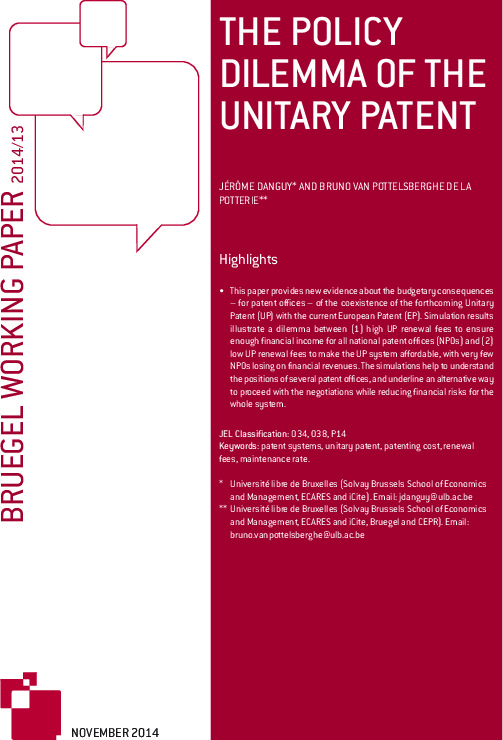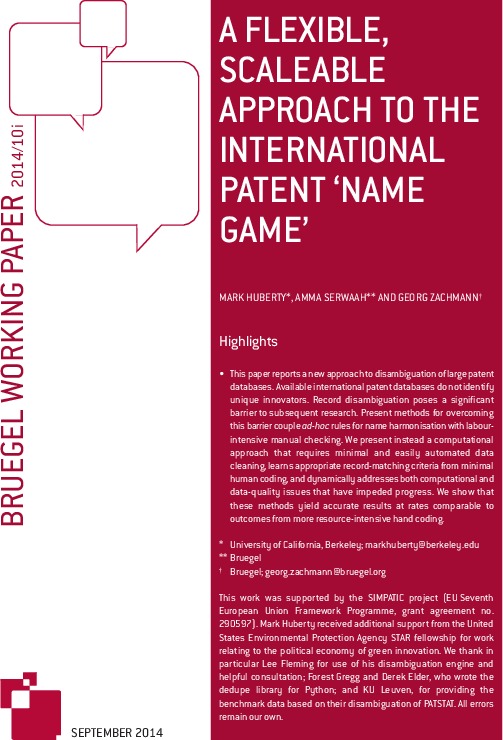Blog Post
The Unitary patent: challenges still ahead
On December 11th the European Parliament approved the proposal made by the Competitiveness Council at Ministerial level to create a “unitary” patent that would cover 25 member states (Spain and Italy opposed the system due to languages reasons). SMEs will in addition benefit from lower fees.
On December 11th the European Parliament approved the proposal made by the Competitiveness Council at Ministerial level to create a “unitary” patent that would cover 25 member states (Spain and Italy opposed the system due to languages reasons). SMEs will in addition benefit from lower fees.
Up to now a European patent that is granted by the EPO has to be translated and validated in the states that are targeted for protection, and renewal fees must be paid each year to keep the patent in force. This system implies prohibitive costs and is tainted by many well described incongruities. These costs and systemic incoherence have for long been taken as weaknesses of the European innovation system. By allowing a protection in 25 member states simultaneously, the creation of the unitary patent should be particularly welcome and praised.
It is however not likely to have any impact on innovation efforts in Europe, not yet. This is due to several important shortcomings that have to be addressed by policy makers if the objective is to create a patent system which effectively stimulates innovation in Europe. The three challenges are related to national patent offices, the fees and the litigation process.
National patent offices. The unitary patent is actually the third ‘patent layer’ in the European Union. The first one is composed of the national patent systems, whereby most national patent offices still grant patents independently from the European Patent Office. The second one is the current ‘European patent’ that can be enforced in the chosen countries for protection. In other words, whereas all other patent systems in the world, including in the USA and in China, are governed by a single patent granted by a single patent office, Europe distinguishes itself by three layers that are not particularly coherent. An inventor with a unitary patent could be challenged by competitors who secured small incremental innovations granted independently by some national patent offices. And national patents confer the same legal power than a European patent in a given jurisdiction. In other words, the new system will not reduce the perceived complexity, but rather worsen it, especially for young innovative companies. The only solution is straightforward. National patent offices should stop granting patent. This does not mean disappearing, but reorienting the core business towards registration services for priority filings, search services, advisory services, and setting up innovation observatories.
Fees. Even if the unitary patent radically reduces translation costs, it is still likely to be prohibitively expensive. The renewal fees are not yet publicly available (to the best of my knowledge), but informal sources suggest that it could be as high as 65 per cent of the total renewal fees for raised each year by the 25 national patent offices. Needless to say, this is much higher than a protection in six countries with the current system (six being what the business sector is ready to pay for). Such a system would lead to a cost of about 40 to 50K EUR for ten years of protection, or 10 times more than in the USA or Japan. True, small firms and universities will benefit from smaller renewal fees, probably – no formal agreement has been published so far- half the ‘regular’ ones, which would lead to about 20k EUR, 4 to 5 times higher than in the USA. The solution here should be to reduce fees to the equivalent four countries’ renewal fees, which is what the business sector is ready to pay with the current system (see footnote 2). Additionally, substantially lower fees must be adopted for SMEs.
The litigation process. The trust that innovators put into a patent system, and hence the propensity to use it, depends on the perceived effectiveness of the litigation system. The political negotiations on the central litigation Court(s) have distributed the litigation authorities across three countries (France, the UK and Germany), according to scientific and technological criterion. This is obviously less optimal than having one centralized place. The challenge here is to make sure that the users of the system understand and trust the system in a short period of time. As many innovations encompass several technological fields, the three courts system will actually lead to a forum shopping system. This forum shopping will be driven by litigation practices (see Mejer and van Pottelsberghe, 2011, foot note 1): the UK system is known to be fast and expensive, the German system is more affordable, relatively fast, and includes many technically qualified judges. The challenge here is to design a centralized litigation system that is trusted by innovators and entrepreneurs. The key issue is to secure a minimum level of convergence between the litigation processes of the three countries.
In a nutshell, the system that is to be put in place is incongruous (three parallel layers generate an unparalleled complexity), still prohibitively expensive, and still unclear regarding litigation proceedings.
Policy makers aiming at tackling these issues with a “problem-solution” approach should strive to end the grant power of national patent offices, further reduce the renewal fees of the unitary patent, especially for small entities, and quickly clarify the location, and especially the procedures and practices of the future patent court(s). If these three issues are solved one might expect a significant increase in the demand for patent rights. Then, the new challenge of the European patent system will be to ensure high quality examination services
Republishing and referencing
Bruegel considers itself a public good and takes no institutional standpoint. Anyone is free to republish and/or quote this post without prior consent. Please provide a full reference, clearly stating Bruegel and the relevant author as the source, and include a prominent hyperlink to the original post.










